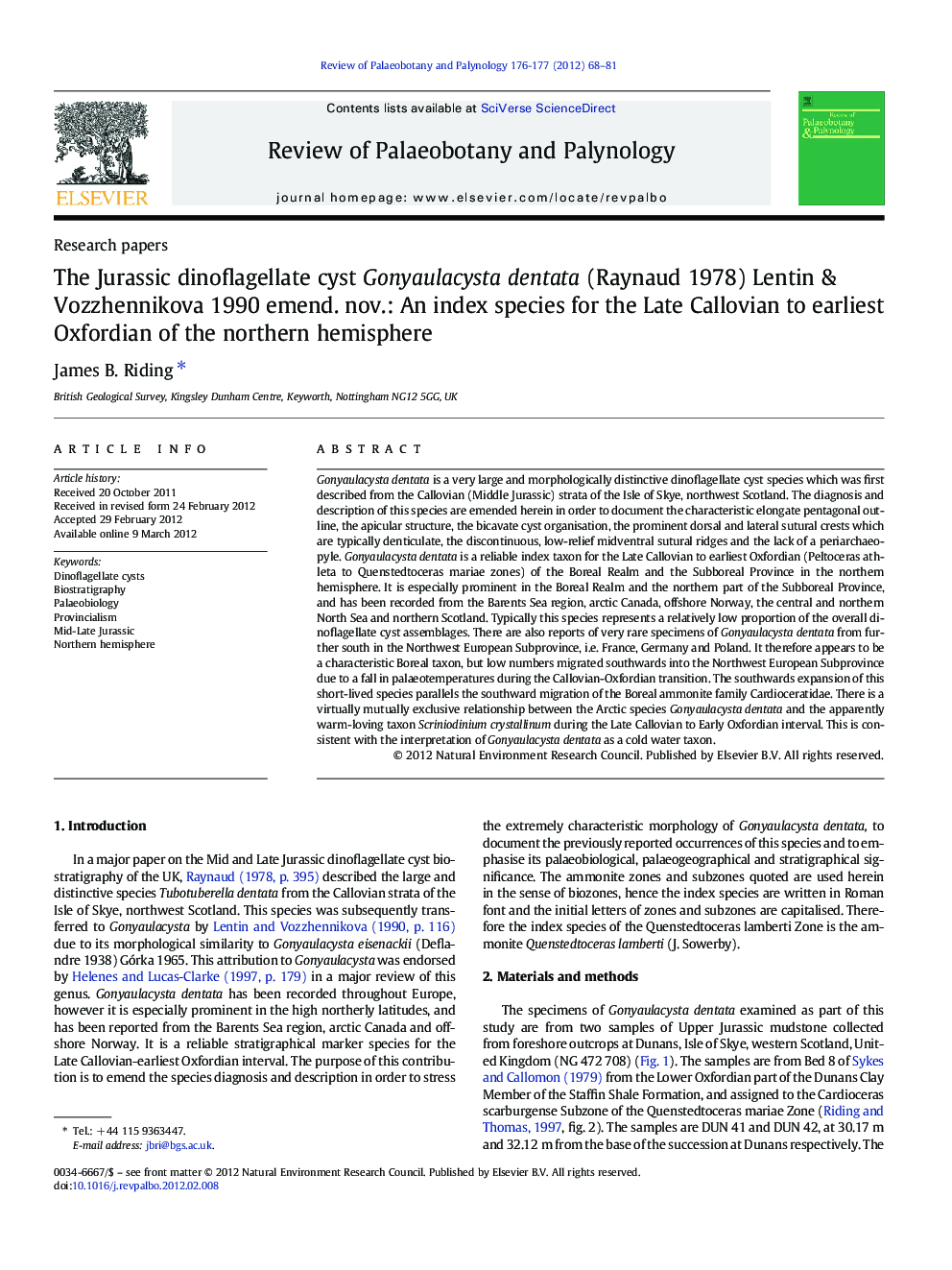| کد مقاله | کد نشریه | سال انتشار | مقاله انگلیسی | نسخه تمام متن |
|---|---|---|---|---|
| 4750630 | 1642521 | 2012 | 14 صفحه PDF | دانلود رایگان |

Gonyaulacysta dentata is a very large and morphologically distinctive dinoflagellate cyst species which was first described from the Callovian (Middle Jurassic) strata of the Isle of Skye, northwest Scotland. The diagnosis and description of this species are emended herein in order to document the characteristic elongate pentagonal outline, the apicular structure, the bicavate cyst organisation, the prominent dorsal and lateral sutural crests which are typically denticulate, the discontinuous, low-relief midventral sutural ridges and the lack of a periarchaeopyle. Gonyaulacysta dentata is a reliable index taxon for the Late Callovian to earliest Oxfordian (Peltoceras athleta to Quenstedtoceras mariae zones) of the Boreal Realm and the Subboreal Province in the northern hemisphere. It is especially prominent in the Boreal Realm and the northern part of the Subboreal Province, and has been recorded from the Barents Sea region, arctic Canada, offshore Norway, the central and northern North Sea and northern Scotland. Typically this species represents a relatively low proportion of the overall dinoflagellate cyst assemblages. There are also reports of very rare specimens of Gonyaulacysta dentata from further south in the Northwest European Subprovince, i.e. France, Germany and Poland. It therefore appears to be a characteristic Boreal taxon, but low numbers migrated southwards into the Northwest European Subprovince due to a fall in palaeotemperatures during the Callovian-Oxfordian transition. The southwards expansion of this short-lived species parallels the southward migration of the Boreal ammonite family Cardioceratidae. There is a virtually mutually exclusive relationship between the Arctic species Gonyaulacysta dentata and the apparently warm-loving taxon Scriniodinium crystallinum during the Late Callovian to Early Oxfordian interval. This is consistent with the interpretation of Gonyaulacysta dentata as a cold water taxon.
► The description of Gonyaulacysta dentata is comprehensively emended.
► This is a large species with a highly distinctive morphology.
► The taxon is a reliable index species for the Callovian-Oxfordian transition.
► Gonyaulacysta dentata is highly characteristic of the Boreal region.
► This species migrated southwards into northwest Europe due to reduced palaeotemperatures.
Journal: Review of Palaeobotany and Palynology - Volumes 176–177, June 2012, Pages 68–81